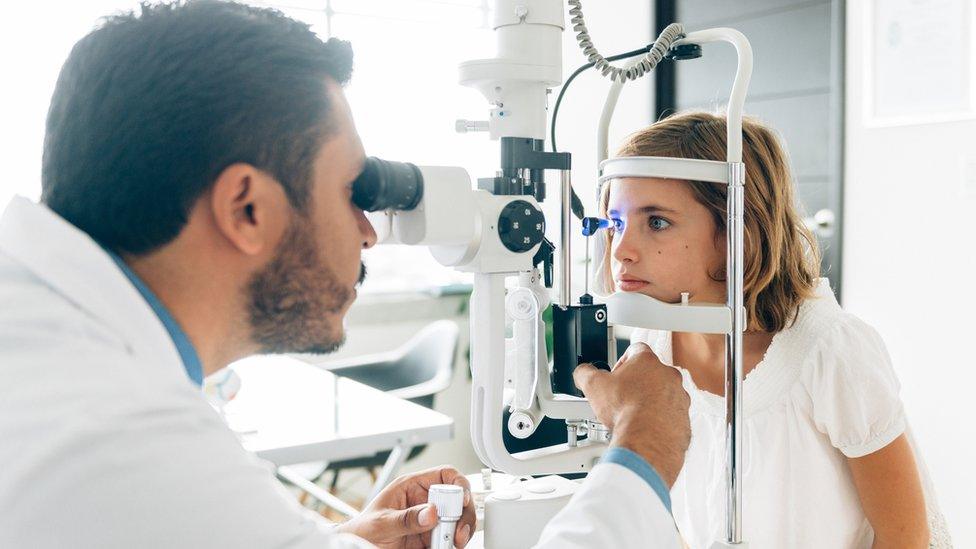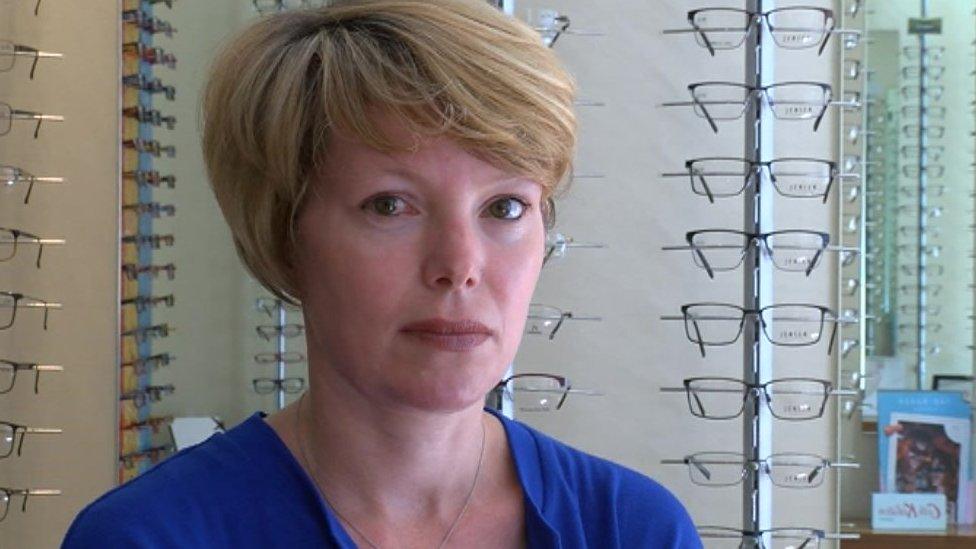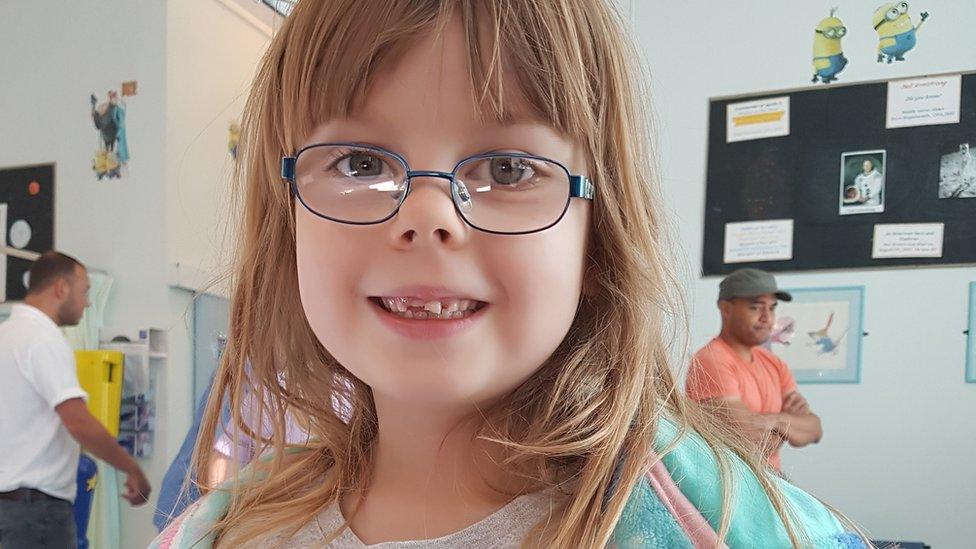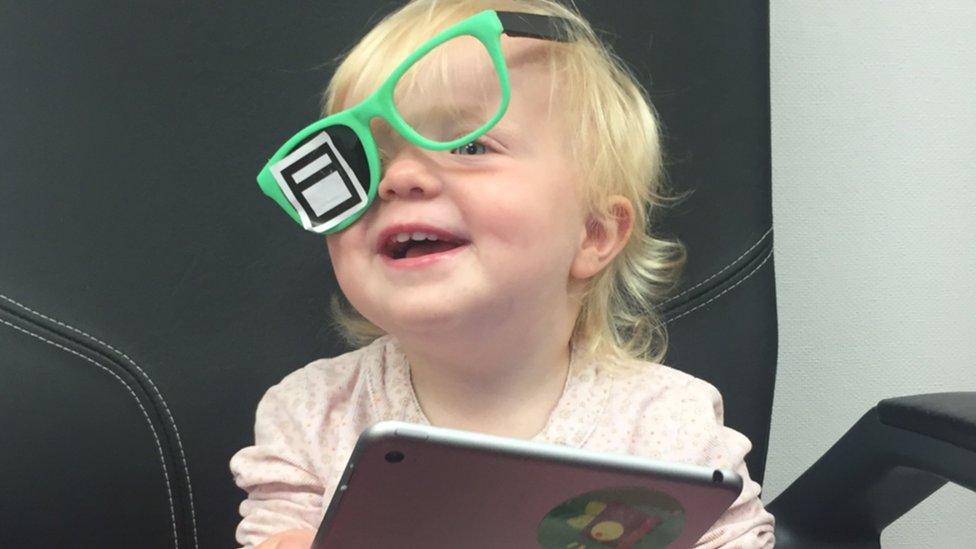Children 'getting sight problems because of eye test delays'
- Published

Children are developing permanent problems with their vision because they are not being given eye tests early enough, optometrists have warned.
An Association of Optometrists survey of 1,200 people indicated a quarter of school-age children had not been taken for a sight test by their parents.
Of parents surveyed, 52% thought tests would be given in primary school.
While some schools do offer screening, the tests are less comprehensive than those provided free on the NHS.
Delayed diagnosis can make treatment for sight problems such as amblyopia, known as "lazy eye", much less effective.
One in 50 children will develop amblyopia, where one or both eyes are unable to build a strong link to the brain, causing vision to not develop properly.
The NHS recommends, external that children should be screened for the condition when they turn four because it becomes harder to treat after the age of six.
Treatments include glasses and using an eye patch or eye drops to obscure the vision in the stronger eye to make the weaker one work harder.

'It made me feel like a terrible parent'

Jane Thompson's daughter, Eve, was diagnosed with amblyopia at the age of seven
Jane Thompson's daughter, Eve, was diagnosed with amblyopia at the age of seven.
The optometrist in her case said it was too late to try eye-patching for Eve, although prescription glasses have helped improve her vision.
Eve is now 14.
Jane, from West Yorkshire, said: "It made me feel like a terrible parent, really, because you want to do your best by your children and then finding out that there is a problem that could've been sorted earlier, but you weren't aware of it, was really hard to handle."
Eve said: "I'd always been seeing out of my right eye and didn't realise anything was wrong.
"My right eye - I can see and it's how it should be. But then as soon as they cover it up and everything's blurry, it's quite scary - I can't see out of this eye."

Chloe was diagnosed with amblyopia at the age of three
In contrast, Nicola Rothera's daughter, Chloe, five, was diagnosed with amblyopia at the age of three and was young enough to use an eye patch.
"If I'd had left her eyesight the way it was, then the left eye wouldn't have been within the legal driving limits, so it would have restricted her in future life," said Nicola, from Bradford.
"An eye test at a certain age should be compulsory because it may be the case with some children they might not have their first eye test until they're maybe six, or possibly older, and at that point you're restricting time, if there is a problem, in which to be able to correct their vision."

'Massively important'
The Association of Optometrists (AOP) also surveyed 1,246 practising optometrists and found:
74% had seen children in the past year whose vision problems could have been treated more successfully with an earlier diagnosis
Of these, 89% had diagnosed cases of amblyopia in the past year that could have been better treated if they had been spotted earlier
Farah Topia, from the AOP, said: "Catching conditions early can be massively important for a child's development.
"For amblyopia, treating a condition early means that the chances of improving the vision in that eye are a lot better.
"All children under 16 are entitled to an NHS-funded sight test.
"It's really important for us to make parents aware that this is available for them and available for their children to access."
The AOP's A B See campaign calls on parents to take their children for an NHS-funded sight test at local opticians every two years, or more often if their optometrist recommends it.
- Published28 December 2017

- Published10 June 2017
